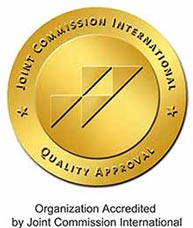 ENT department - main page >
ENT department - main page >
Mandibullectomy and reconstruction from a fibula
Oncologic tumors in the head and neck area can also involve the joint of the jaw. If this happens, there is a need to remove the part that is involved. This operation is called Mandibulectomy. After the operation, the jaw is reconstructed with a segment of bone taken from a shin. In addition to bone, soft tissue and blood vessels transferred to the excision area.
The surgery will cause facial swelling to gradually deteriorate in the recovery process. Later you will be able to eat, drink and chewing gradually. The duration of the recovery period differs from one person to another and depends on the size and the volume of the surgery.
Pre surgery
At the pre-surgery meeting you will be examined by the surgeons and the anesthesiologist, and you will meet with the medical staff as required for your preparation for surgery.
The surgery is performed in cooperation between two doctors, an ENT physician and head and neck surgery that will be responsible for the removal of the tumor and a plastic surgeon to perform the reconstruction of the jaw, and will meet with the dental surgeon to assess the condition of the teeth before surgery and to prepare a model for your new jaw.
-
Additional tests may also be required:
- Examination by an internal medicine doctor for evaluating your other medical conditions. This consultation is important before surgery.
- Respiratory assessment.
- Cardiologist evaluation.
- Imaging tests include X-rays and CT SCAN.
- Examination of blood flow in the donor's leg.
- The completion of the preparation for the operation includes laboratory tests, chest imaging and an ECG chart in addition to an anesthesiologist.
The surgery
The surgery will be carried out by two teams, the first team will be the ENT team and head to neck surgery that will cut the tumor, the duration of surgery is 5 hours, while the plastic surgery team will take soft tissue, bone and blood vessels from the leg to be used to restore the jaw. After this process of reconstruction begins.
The reconstruction process usually lasts about 5 hours, the bone taken from the foot will be shaped into very similar to the part that was removed from the jaw, and later, under a microscope, the arteries and veins taken from the leg will be attached to the veins and arteries of the resection area. The rest of the jaw will be fixed with pads and bolts, and then covered with soft tissue
The surgery can cause major swelling of the mouth and difficulty breathing. Therefore, during the operation, tracheostomy (creating a surgical window in the neck) will be performed and a cannula inserted to keep the airway open. This will allow free air flow and breathing.
After surgery
The patient wakes up in the postoperative awakening unit, and is not able to open his mouth and not be able to talk because of the tracheotomy. He is able to answer yes and no questions and can also write if he needs to ask for something. The patient stays in the intensive care unit for the first night so that the cord is closely monitored for 12 hours.
-
After surgery, you will be connected to drainage, urinary catheter and other medical devices:
- Vaporized air to the cannula that delivers air to the lungs
- Infusion through which you will receive: liquids, antibiotics for profilaction, painkillers and anticoagulant therapy.
- Urine catheter (extracted after 2-3 days)
- Drainage in the neck and leg (the drains will be removed after the volume of discharge in them will be significantly reduced).
- Nasogastric tube through the nose and for the provision of medication and food
- Bandage on the donor foot.
In the first week after surgery, doctors and nurses will check the blood supply in the transplanted area with a device called Doppler. In addition, the team will check the color and temperature of the transplanted area. This follow-up is very important.
The sutures from the face will be removed about a week after surgery, and the stitches will remain in the neck for 7 to 10 days. If you have received radiation therapy before the surgery, stitches will be left for 14 days.
At first, the nurse and the nursing staff will help you treat the drains and treat the trachotomy. Later on, when you feel better, you will be taught to take care of yourself.
Further instructions and information will be given by the medical staff.








